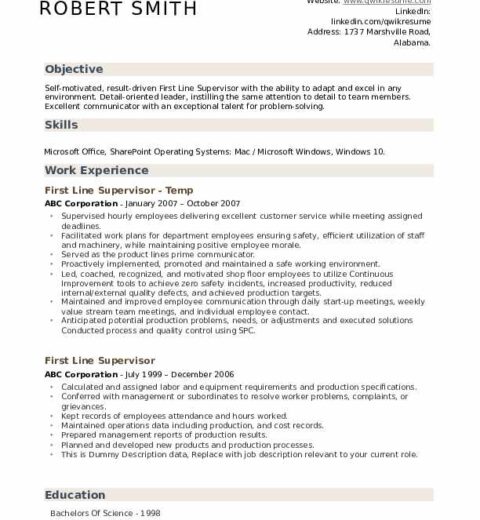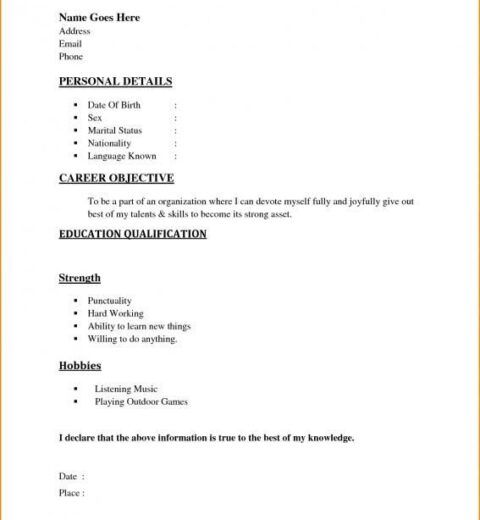Crafting a resume that stands out in a competitive job market can often be a daunting task. One paramount aspect is the articulation of skills. The skills section, when constructed with precision and clarity, can serve as a critical differentiator between applicants. A well-structured skills section not only highlights your abilities but also aligns them with the needs of prospective employers. In this article, we will examine how to present your skills on a resume in a manner that captivates and resonates with hiring managers.
Understanding the Importance of Skills on a Resume
In the modern job landscape, employers are inundated with resumes. Consequently, the skills section is a pivotal battleground where candidates compete for attention. Prospective employers often scan resumes for specific skills that align with job descriptions. This makes it essential for candidates to not only list their skills but also to tailor them to each application. Effective skill presentation can illuminate your proficiency and compatibility with the role, addressing a key concern for hiring managers—whether you possess the requisite capabilities to succeed.
Identifying Skills Relevant to the Job
Commencing this process involves an astute assessment of the job description. Careful analysis will reveal both hard skills and soft skills that the employer values. Hard skills, such as data analysis or proficiency in specific software, are quantifiable and can often be demonstrated through certifications or prior work experience. Conversely, soft skills, like communication and teamwork, though less tangible, are equally crucial. They depict how you interact in a professional setting and can often be the deciding factor in hiring decisions.
To identify the most pertinent skills, create a list based on the job specifications and your personal expertise. Use industry-specific terminology and jargon prevalent in your field to enhance relevance. Moreover, it is wise to incorporate a blend of soft and hard skills. The dual focus provides a holistic view of your qualifications and underlines your versatility.
Developing a Clear and Concise Skills Section
Once you have identified the skills relevant to the job, the next step is to present them succinctly. A skills section should be strategically located on your resume, ideally near the top, after your summary statement. This ensures that it captures the immediate attention of the reader.
Consider using bullet points to facilitate easy readability. Each bullet should be concise while still conveying substantive information. Instead of merely stating, “communication skills,” you could elaborate with a statement such as, “exceptional verbal and written communication skills demonstrated through client presentations and reports.” Such specificity sets a more profound context for your capabilities.
Employing Action Verbs to Enhance Impact
Utilizing action verbs can significantly amplify the effectiveness of your skills presentation. Incorporate vibrant action verbs that evoke a sense of proficiency and achievement. Terms like “engineered,” “developed,” “led,” or “orchestrated” not only assert your capabilities but also add a dynamic quality to your resume. An example could be, “spearheaded a cross-functional team to develop a market strategy that increased sales by 30%.” This narrative approach not only lists skills but demonstrates their application in real-world scenarios.
Quantifying Your Skills
When applicable, quantifying your skills can dramatically heighten their perceived value. Numbers provide tangible proof of your accomplishments and offer concrete evidence of your capabilities. For instance, stating “managed a budget of $500,000” or “increased customer satisfaction ratings by 20%” grounds your skills in reality and allows employers to gauge the magnitude of your contributions.
Adapting Your Skills Section for Different Roles
A common pitfall candidates encounter is failing to customize their skills section for different job applications. Each role may emphasize distinct skills, and a one-size-fits-all resume may not effectively convey your potential fit for each position. The key is to adapt your skills section based on the job requirements. Review and revise the skills listed to ensure that they align with the specific role, thereby demonstrating your attentiveness and genuine interest in the position.
Using Keywords for Applicant Tracking Systems
With the rise of technology in the hiring process, many companies utilize Applicant Tracking Systems (ATS) to filter resumes. Therefore, incorporating relevant keywords and phrases from the job description into your skills section is crucial. By aligning the terminology with that used in the job posting, you enhance your chances of passing through automated filtering processes and securing an interview.
Maintaining Authenticity and Integrity
While it is essential to embellish your skills, honesty must remain at the forefront. Misrepresenting your abilities can lead to severe repercussions, especially if you are placed in roles that demand skills you do not possess. Instead, focus on presenting an authentic version of your skills, emphasizing your willingness to learn and adapt.
Conclusion: Reflecting on Your Skillset
In crafting your resume, the skills section presents a unique opportunity to shine. By meticulously identifying, articulating, and presenting your skills in a tailored, concise, and honest manner, you enhance your overall candidacy. This strategic approach not only addresses the concerns of employers but also positions you favorably in the competitive job landscape. Remember, your skills are your professional arsenal; presenting them effectively is paramount to securing the career opportunities you seek.




